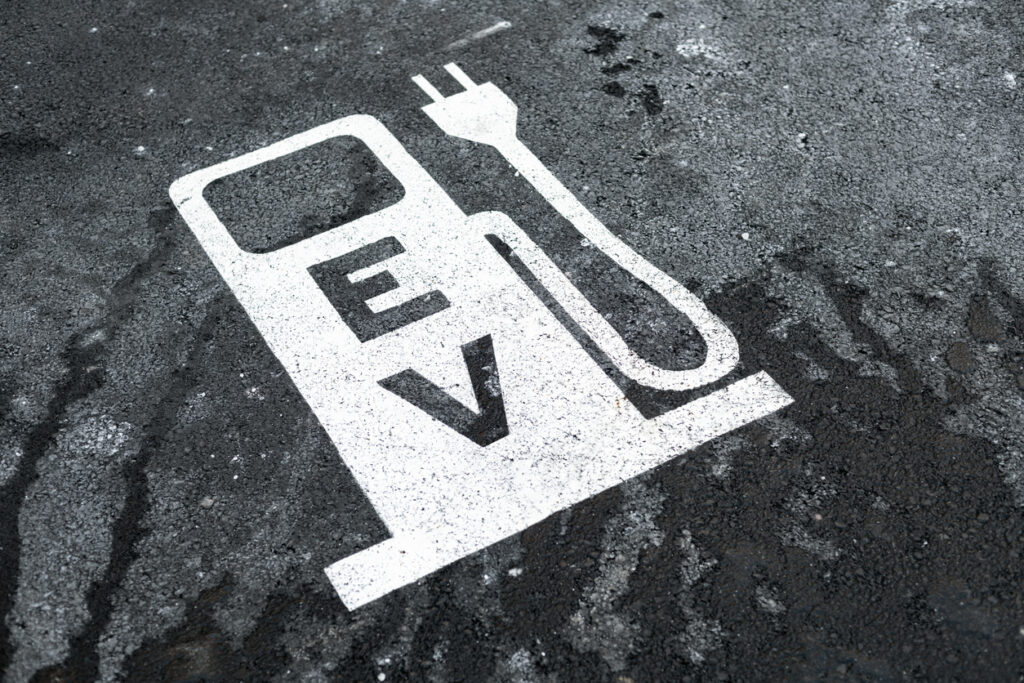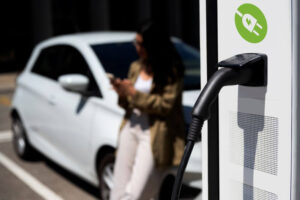As electric vehicles (EVs) become more mainstream, the infrastructure supporting them must evolve to meet the growing demand. With governments worldwide setting ambitious targets for EV adoption, it is crucial to have efficient and accessible EV charging stations. The success of EVs depends not only on the availability of charging points but also on how these charging stations are designed and managed. One critical aspect of this design is striping, which involves painting lines on the pavement to organize spaces and direct traffic flow. Optimized striping can significantly enhance user experience, safety, and overall functionality of EV charging stations. This blog explores how optimized striping can improve the efficiency of EV charging stations and the future advancements we can expect in this field.
Current State of EV Charging Stations
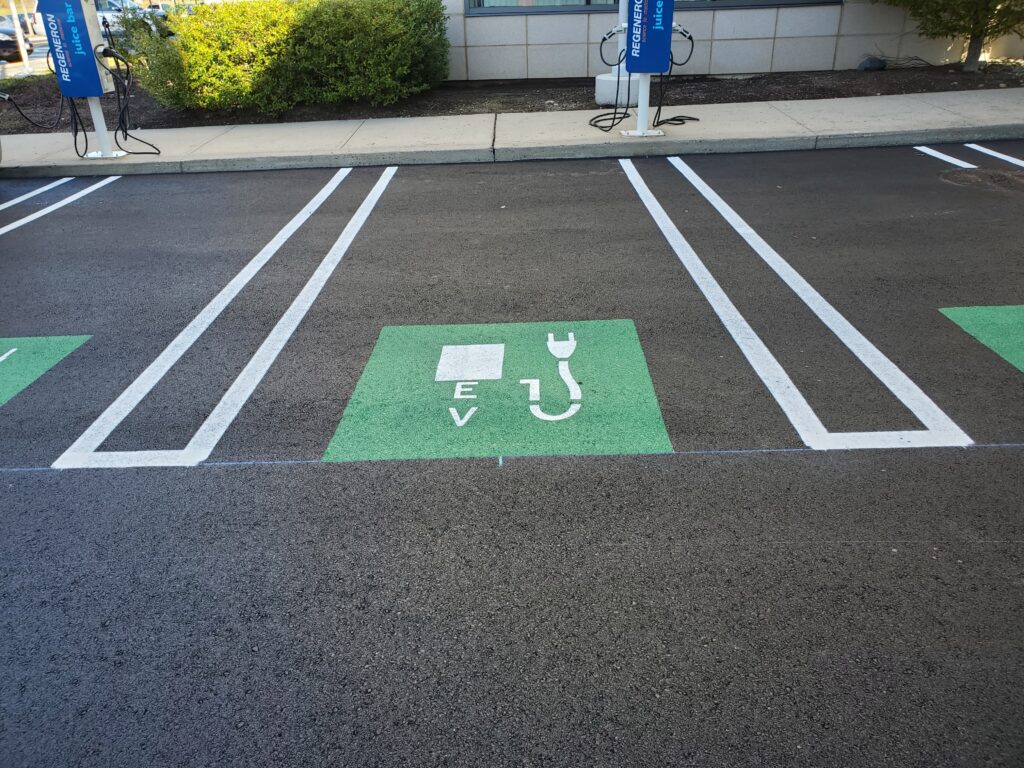
Currently, EV charging stations vary widely in their layout and design. Many stations are retrofitted into existing parking areas, leading to a mix of different designs and varying levels of efficiency. Common challenges faced by users include difficulty in finding available chargers, navigating crowded spaces, and safely maneuvering their vehicles. These issues can often be attributed to poor or outdated striping designs.
Striping, the process of painting lines on the pavement to designate parking spots and traffic flow, is crucial for organizing space within a charging station. Effective striping ensures that EVs can easily access charging points without causing congestion or accidents. However, many existing stations lack clear, intuitive striping, leading to inefficient use of space and increased frustration for drivers.
Moreover, with the increasing variety of EV models, each with different charging requirements, the need for a well-organized charging station becomes even more critical. Without proper striping, it can be challenging to manage the diverse needs of various EVs, from compact cars to larger SUVs and trucks. This complexity underscores the importance of reevaluating and optimizing the striping in EV charging stations to cater to the growing and evolving demands.
Benefits of Optimized Striping for EV Charging Stations
Optimized striping can transform the functionality of EV charging stations in several ways:
Improved Traffic Flow and Reduced Congestion: Clear and logical striping guides drivers to available charging points efficiently, minimizing traffic jams and reducing the time spent searching for a spot. By directing traffic flow, optimized striping ensures that vehicles can enter and exit charging stations smoothly, preventing bottlenecks and improving overall station throughput.
Enhanced User Experience and Convenience: Well-marked charging spots with clear signage help drivers quickly identify where they can charge their vehicles, making the process more user-friendly. Consistent and intuitive striping patterns reduce confusion, making it easier for drivers to navigate the station, especially in large and busy locations.
Increased Safety for Drivers and Pedestrians: Proper striping reduces the risk of accidents by delineating safe pathways for vehicles and pedestrians. This is especially important in busy urban areas where foot traffic is high. Clearly marked pedestrian zones and vehicle pathways prevent accidents and ensure that everyone can move safely within the station.
Better Utilization of Available Space: Optimized striping allows for the maximum number of vehicles to be accommodated within a given area, ensuring that charging stations can serve more users without requiring additional land. By carefully planning the layout, operators can maximize the efficiency of their stations, reducing the need for costly expansions.
Compliance with Regulations and Standards: Adhering to standard striping practices ensures that EV charging stations meet legal requirements and accessibility standards, making them usable for all drivers, including those with disabilities. Compliance with these standards not only enhances the usability of the stations but also protects operators from potential legal issues.
Innovative Striping Techniques
To meet the evolving needs of EV charging stations, innovative striping techniques are being developed and implemented:
Color-Coded Striping: Using different colors to designate various types of charging points (e.g., fast chargers vs. regular chargers) helps drivers quickly find the right spot for their vehicle’s charging needs. This also helps in managing the flow of traffic more effectively. For instance, green striping can indicate standard charging spots, while blue or red striping can mark high-speed charging zones, making it easier for drivers to identify and navigate to the appropriate charger.
Smart Striping with Integrated Sensors and IoT: Advanced striping solutions incorporate sensors and Internet of Things (IoT) technology to provide real-time information about the availability of charging points. These smart systems can guide drivers to the nearest available charger, reducing wait times and improving overall efficiency. For example, sensors embedded in the pavement can detect when a charging spot is occupied and communicate this information to a central system, which can then display availability on digital signage or mobile apps.
Dynamic Striping Solutions: Some charging stations are experimenting with dynamic striping, which uses digital displays or movable barriers to create flexible layouts that can adapt to changing demand patterns. This approach allows for the optimization of space based on real-time usage data. For instance, during peak hours, additional charging spots can be created by temporarily adjusting the striping layout, accommodating more vehicles and reducing wait times.
Case Studies of Successful Implementations: Cities and companies that have successfully implemented innovative striping techniques provide valuable insights into best practices. For example, a city might use color-coded striping to differentiate between charging zones for different vehicle types, while a company might integrate sensors to monitor and manage traffic flow within their charging stations. These case studies highlight the benefits of innovative striping and offer practical guidance for other regions or organizations looking to improve their EV charging infrastructure.
Technological Advancements in Striping
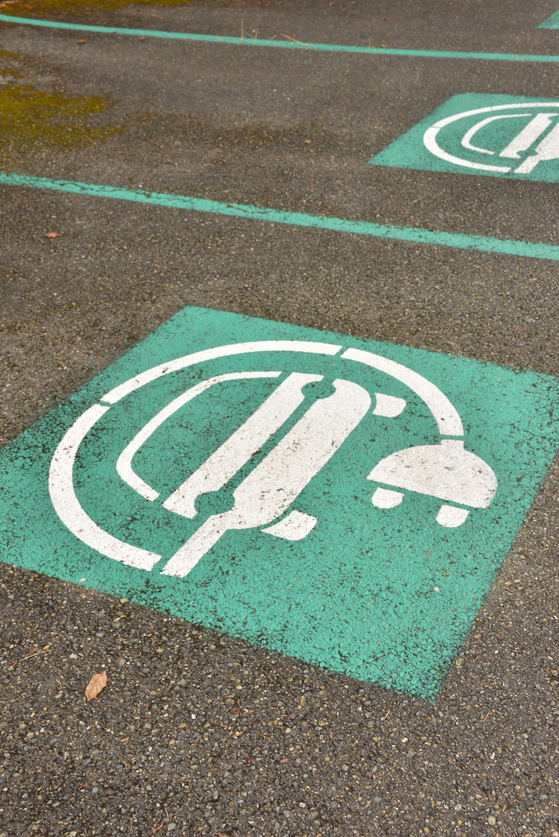
The field of striping is witnessing several technological advancements that promise to enhance the efficiency of EV charging stations:
Advanced Striping Materials and Application Methods: New materials, such as thermoplastic and epoxy-based paints, offer greater durability and visibility compared to traditional paints. These materials can withstand heavy traffic and harsh weather conditions, ensuring that striping remains clear and effective over time. Additionally, these materials can be applied using advanced techniques that ensure precise and consistent results.
Reflective and Durable Materials: Incorporating reflective elements into striping materials enhances visibility, especially at night or in low-light conditions. Durable materials ensure that the striping lasts longer, reducing the need for frequent maintenance and reapplication. Reflective striping improves safety by making the markings more visible to drivers, even in adverse weather conditions.
Future Trends in Striping Technology: The future of striping technology includes innovations such as solar-powered striping and the use of augmented reality (AR) to assist in the design and application process. These advancements will further enhance the functionality and sustainability of EV charging stations. For instance, solar-powered striping could include integrated lighting systems that illuminate the markings at night, improving visibility and safety.
Designing for the Future
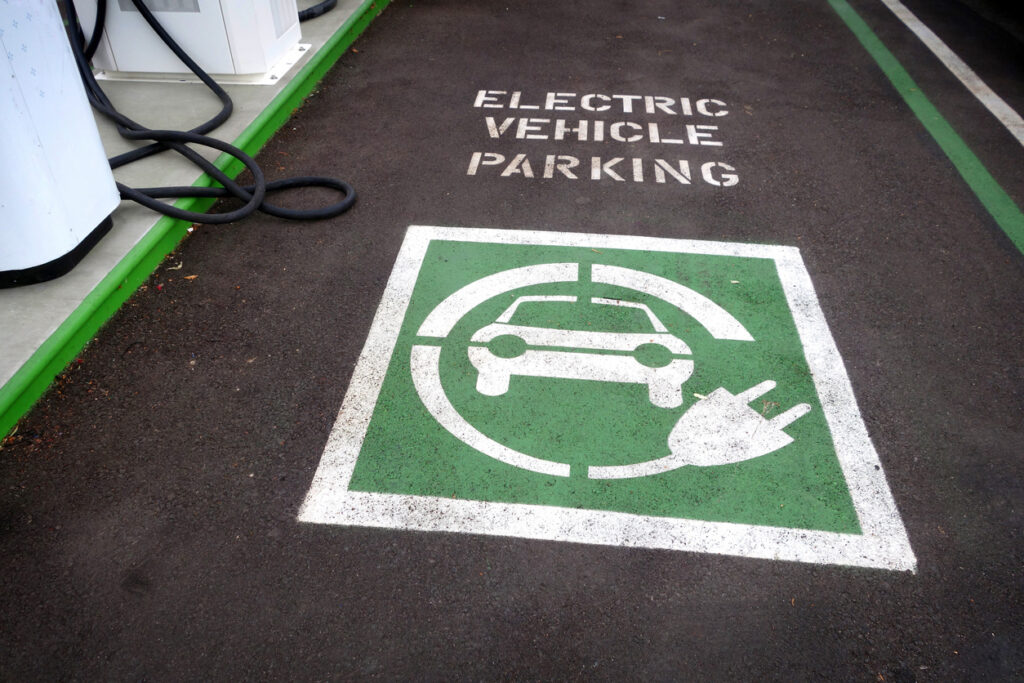
As the adoption of EVs continues to grow, it is essential to anticipate and plan for the future needs of charging infrastructure. Optimized striping plays a crucial role in this planning process:
Anticipating the Growth in EV Adoption: Proactive planning for EV charging stations involves anticipating future demand and ensuring that infrastructure can scale accordingly. This includes designing flexible layouts that can accommodate more vehicles as the number of EVs on the road increases. Planners must consider factors such as projected EV adoption rates, technological advancements, and changing consumer preferences to create future-proof designs.
Integrating Striping with Other Smart City Initiatives: Optimized striping should be part of a broader strategy to develop smart cities. This includes integrating charging stations with other smart infrastructure elements, such as traffic management systems and renewable energy sources. By creating a cohesive and interconnected infrastructure, cities can enhance the overall efficiency and sustainability of their transportation systems.
Planning for Multi-Purpose Spaces: Charging stations should be designed as multi-purpose spaces that can serve a variety of functions. For example, they can incorporate amenities such as rest areas, retail outlets, and green spaces. Adaptable striping designs allow these spaces to be reconfigured as needed to meet changing demands. This flexibility ensures that charging stations remain relevant and useful even as the needs of EV users evolve.
Stakeholder Collaboration: Successful optimization of striping designs requires collaboration among various stakeholders, including city planners, transportation authorities, charging station operators, and EV manufacturers. Engaging stakeholders in the planning and implementation process ensures that all perspectives are considered and that the resulting designs meet the needs of all users. Collaboration also helps to align goals, share best practices, and leverage resources effectively.
Optimized striping is essential for the future efficiency of EV charging stations. By improving traffic flow, enhancing user experience, increasing safety, and maximizing space utilization, advanced striping techniques play a crucial role in the success of charging infrastructure. As technology continues to evolve, the potential for even more innovative and effective striping solutions will grow, ensuring that EV charging stations can meet the needs of a rapidly expanding market.
Are you ready to enhance the efficiency and user experience of your EV charging stations?Our expert team uses the latest technologies and materials to deliver high-quality striping that meets all regulatory standards and adapts to the evolving needs of EV users.
Contact We Do Lines today to schedule a free estimate and discover how our innovative striping solutions can transform your facilities. Visit wedolines.com to get started. Let’s pave the way for a more efficient and sustainable future together!

